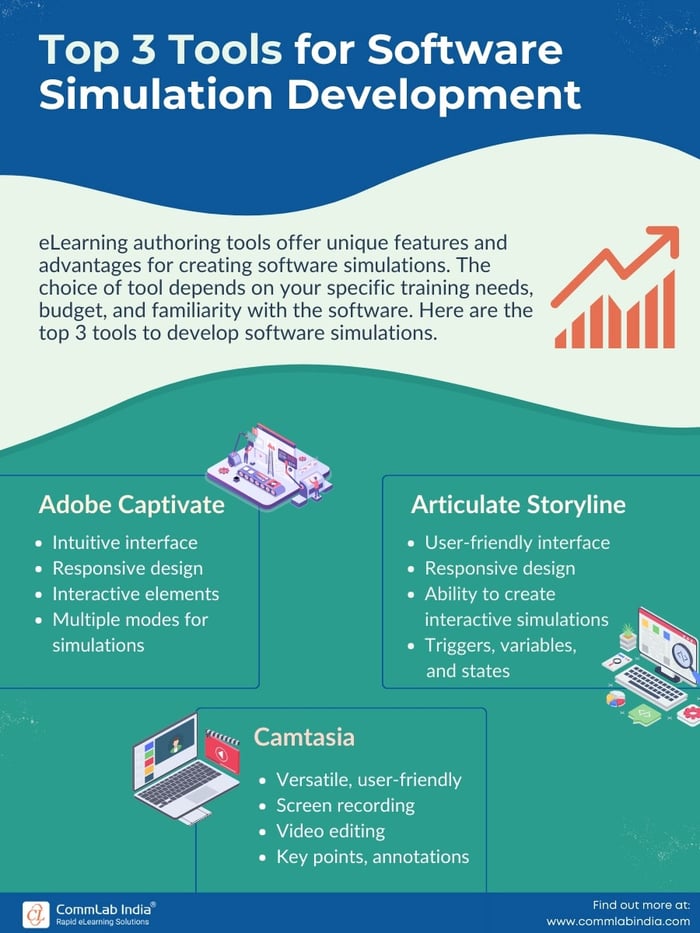Role of Simulations in Modern Software Training [Infographic]
![Role of Simulations in Modern Software Training [Infographic] Role of Simulations in Modern Software Training [Infographic]](https://blog.commlabindia.com/hubfs/blogs/software-training-simulations-enhance-infographic.jpg)
In a fast-paced world, where software continually evolves, the ability to provide comprehensive and impactful training becomes important. Whether it's mastering complex functionalities, staying updated on the latest features, or ensuring optimal utilization of software tools, training is crucial for all.
And if simulations are incorporated in software training, it offers an immersive and experiential learning approach. By replicating real-world scenarios within a controlled environment, simulations allow learners to actively engage with the software's features.
Benefits of Simulations in Software Training
1. Practical Expertise
Elevates knowledge into hands-on proficiency.
2. Better Problem-Solving
Instills confidence to navigate real-world challenges seamlessly.
3. Risk-Free Learning
Provides a safe environment for learners to experiment and learn from mistakes.
4. Enhanced Engagement
Fosters active participation and deeper understanding of software features.
5. Seamless Transition
Facilitates a smooth shift from theoretical learning to real-world application.
Understanding the Impact of Simulations in Software Training
Let’s understand the effectiveness of simulations with an example of training for a drug modeling software. In this simulated training environment, learners step into the shoes of researchers tasked with designing a new drug. The software simulates various aspects of drug development, allowing participants to explore molecular structures, predict potential interactions, and analyze the pharmacokinetics of different compounds.
For example, learners might engage in a simulation where they need to optimize the molecular structure of a potential drug to enhance its efficacy and minimize side effects. The simulation enables them to interact with the software tools, make adjustments to the molecular model, and observe how these changes impact the drug's properties. Through these immersive simulations, participants not only become proficient in using the drug-modeling software but also develop a deeper understanding of the processes involved in pharmaceutical research. Simulations in this context provide a safe and controlled space for learners to experiment, make informed decisions, and refine their skills in drug design, ultimately preparing them for the complexities of real-world scenarios.
→ Download Now: Instructional Design 101 [eBook]
3 Top-notch Tools for Software Simulation Development
Summing it up!
By immersing learners in realistic scenarios, simulations elevate learning into tangible expertise. This not only enhances proficiency but also instills confidence in learners to navigate real-world challenges seamlessly. Interested in discovering more ways to craft effective software training experiences? Delve into the world of instructional design with our comprehensive eBook. Learn proven strategies, innovative approaches, and expert insights on how to create impactful straining programs that resonate with learners. Elevate your instructional design skills and take the next step towards mastering the art of creating immersive and effective learning journeys. Download your copy now!





![Cracking the Code for Sticky Learning in the Digital Era [Infographic]](https://blog.commlabindia.com/hubfs/blogs/digital-learning-sticky-learning-infographic.jpg)

